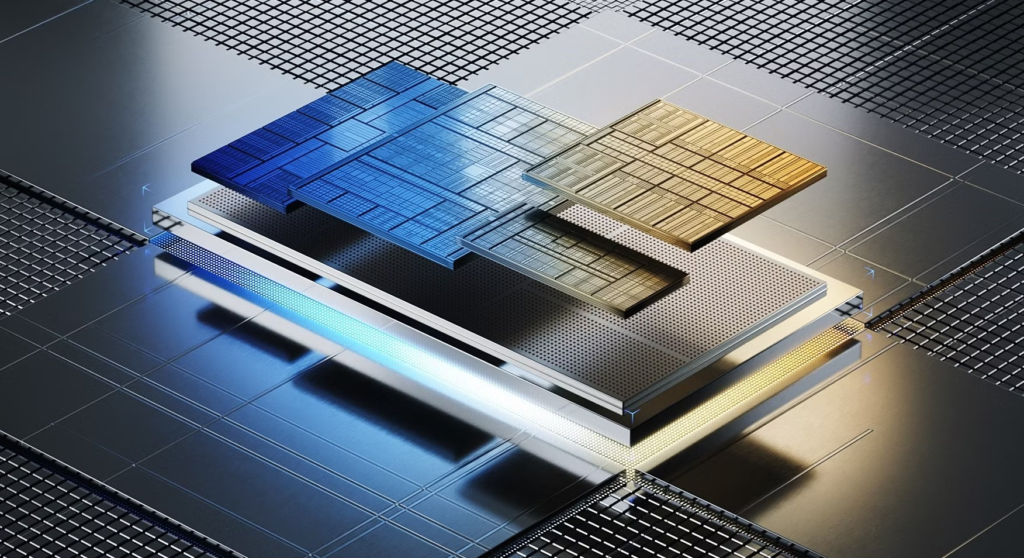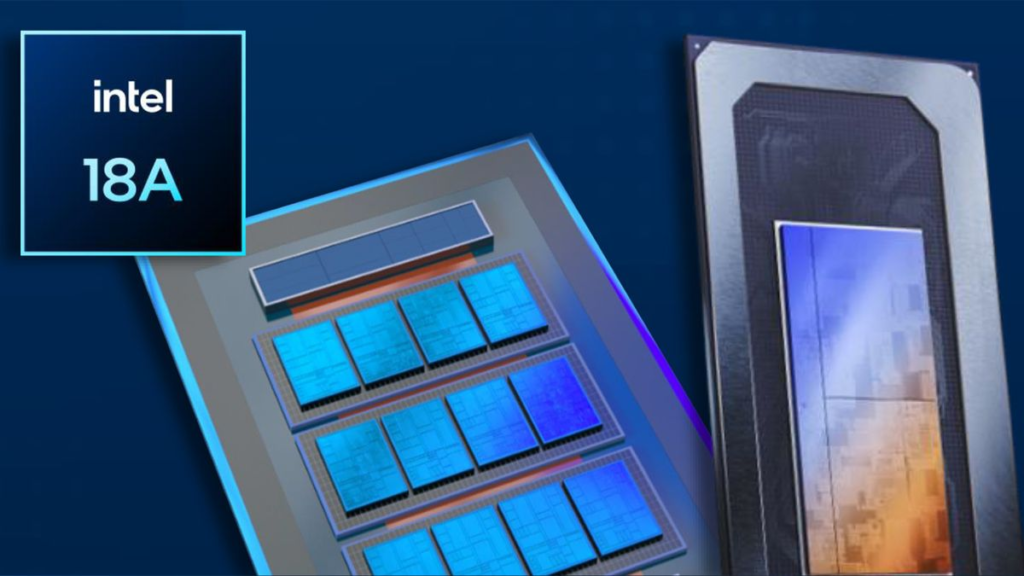Intel has officially offered a sneak peek into its upcoming Panther Lake architecture at a recent industry event. These chips mark a significant step forward in computing, with Intel focusing on a powerful combination of multi-tile architecture, AI-focused Neural Processing Units (NPU), and advanced Xe3 integrated graphics (iGPU).
Set to debut in 2025, Panther Lake aims to redefine performance, energy efficiency, and on-device AI capabilities for next-gen laptops and PCs. This preview follows the successful rollout of Lunar Lake chips, which are expected to launch later in 2024.
Read more about Panther Lake’s positioning in Intel’s roadmap here: Intel’s official newsroom.
Multi-Tile Architecture: The Heart of Panther Lake
At the core of Panther Lake’s innovation is its multi-tile architecture, a modular design approach that separates various processing elements into individual silicon “tiles” on a single chip package. This design allows Intel to improve performance and energy efficiency by letting different components operate independently but cohesively.

Each Panther Lake chip features:
- A Compute Tile for CPU tasks
- A Graphics Tile featuring Xe3 architecture
- A SoC Tile with the Neural Processing Unit (NPU)
- A potential IO Tile for data routing and connectivity
This modular approach allows Intel to produce versatile chips tailored for different markets, from ultra-thin laptops to powerful workstations.
Integrated NPU: AI at Your Fingertips
One of the most exciting additions to Panther Lake is the Neural Processing Unit (NPU) integrated directly into the chip. As AI becomes central to modern computing — from voice recognition to image enhancement and real-time translation — Intel aims to bring AI processing closer to the user.
Unlike traditional CPUs and GPUs, NPUs are optimized specifically for AI workloads. With a built-in NPU, Panther Lake enables faster and more energy-efficient AI performance without relying solely on cloud computing.
Use cases include:
- Real-time video effects during conference calls
- AI-based photo and video editing
- Language processing and voice assistants
- Battery-saving adaptive performance tuning
This is in line with Intel’s long-term vision of enabling AI PCs — personal computers that leverage local AI to enhance daily productivity and creativity.
Xe3 iGPU: Powerful Integrated Graphics for Everyone
Intel is also upgrading its integrated graphics with Panther Lake. The new Xe3 iGPU (Integrated Graphics Processing Unit) brings next-level graphics performance to thin-and-light laptops and desktops without needing a separate GPU.
The Xe3 graphics tile is expected to offer:
- Better performance in 3D rendering and gaming
- Support for ray tracing and advanced lighting
- Higher resolutions and smoother frame rates for content creators
- Hardware acceleration for AI-enhanced visuals
Intel is positioning the Xe3 iGPU as a game-changer for users who want impressive graphics without sacrificing portability or power consumption.
For developers and gamers alike, this offers a cost-effective alternative to discrete GPUs while still supporting high-performance tasks.
Performance and Efficiency: Built on Intel 18A Process
Panther Lake chips will be manufactured using Intel’s 18A (angstrom) process node, a breakthrough in transistor design. This advanced process allows more transistors to be packed into a smaller space, increasing performance and reducing power usage.

Key performance upgrades expected from 18A:
- Higher clock speeds with less heat
- Greater battery life in portable devices
- More efficient use of chip real estate
The 18A process is also designed to support Intel’s RibbonFET (gate-all-around transistors) and PowerVia technologies, which boost power delivery and signal integrity.
This is a critical step in Intel’s aggressive strategy to regain leadership in semiconductor manufacturing and compete with TSMC and Samsung.
Strategic Roadmap: Lunar Lake to Panther Lake
Panther Lake will follow Lunar Lake, which is set to debut in late 2024. While Lunar Lake targets thin-and-light devices with improved AI features, Panther Lake raises the bar even further.
Intel is expected to release Panther Lake in mid to late 2025, with samples already in testing. According to Intel CEO Pat Gelsinger, these chips will be the most advanced processors the company has ever built.
This aligns with Intel’s “five nodes in four years” plan to accelerate innovation and close the gap with competitors like AMD and Apple Silicon.
Check the full Intel roadmap update here: Intel Architecture Day Recap.
Market Implications: What Panther Lake Means for Users
Panther Lake is not just about speed; it’s about bringing intelligence to your PC. With AI workloads growing rapidly across industries — from education to business and content creation — the inclusion of an NPU and enhanced iGPU will enable:
- Smoother multitasking and productivity
- Smarter applications that adapt to user behavior
- Enhanced visuals and creativity tools for content makers
- More energy-efficient computing experiences
Whether you’re a gamer, student, or professional, Panther Lake represents a powerful leap into the future of personal computing.
Final Thoughts: A Bold Step for Intel’s Future
With Panther Lake, Intel is showing the industry that it is ready to compete and lead. The combination of modular design, AI capabilities, and next-gen graphics makes these chips a top contender for next-generation laptops and desktops.
As we move into an AI-centric computing world, chips like Panther Lake are likely to play a pivotal role in shaping how users interact with technology.
Stay tuned for more updates as Intel gets closer to its official launch in 2025.
For more tech stories like this, visit TechRadar or AnandTech.
Also Read – Nvidia, AMD, Micron Fuel Huge Surge in Tech Stocks






